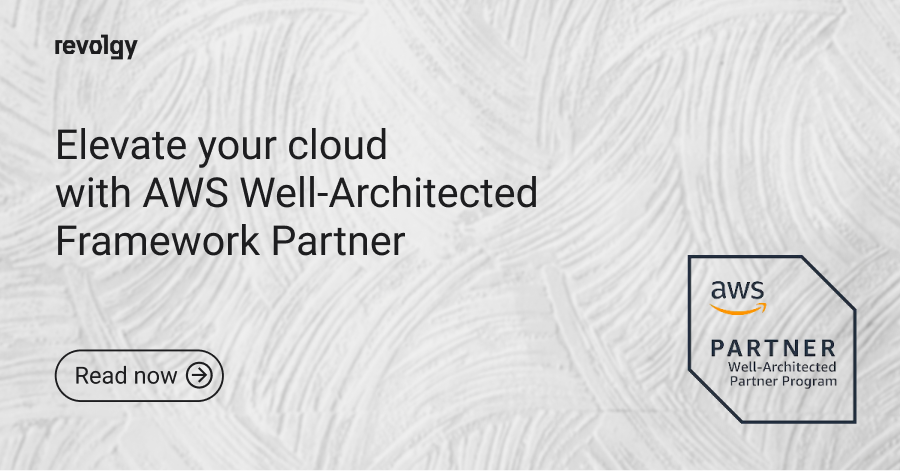AWS, GCP, Professional Services
Do you know what you’re really paying for in the cloud?
When using cloud solutions, surely, you want to have a good overview of what you pay for. You are scaling, your teams run many cloud services, and you have many projects in the pipeline that need a lot of computing power and support. You may be wondering why your cloud bill looks like a Christmas shopping receipt. Do you really need all of this? Or maybe more cost-efficient alternatives will do the job just fine...
Say no more, we’ll take a proper look at your costs. You can rightsize your cloud costs to the needs of your business so that you can get through any challenging, unpredictable times.
Why is the cloud sometimes so expensive?
Many businesses reap the benefits of hosting workloads in the cloud, yet this infrastructure model is not sustainable if you can’t keep your cloud bills under control.
Cloud bills skyrocket for multiple reasons, such as unnecessary capacity, overprovisioned resources, and poor visibility into the environment. You must carefully evaluate your cloud services — if they are critical for running, unnecessary and might be switched off, their fees, team ownership for spending, alternatives, etc.
It seems like rocket science at first glance, but fortunately, there are tools and cost optimization practices that can help eliminate unnecessary spending.
How to optimize cloud cost?
Since we optimize spending for almost all of our infrastructure clients, we share with you some useful tips:
1. Use billing and cost monitoring tools
An effective cost management strategy requires the right tools in place to monitor spending.
AWS and Google Cloud offer many cost monitoring tools, such as AWS Cost Explorer, AWS Budgets, or Google Cost Management, which enables Google Cloud Platform users to identify cost spikes and set up spending reports for cost optimization. Read about our custom cost monitoring tool for one of our healthcare customers.
📝 You should learn how to attribute costs back to departments or teams using labels and build your own dashboards for more granular cost views. You can also use quotas, budgets, and alerts to closely monitor your current cost trends and forecast them over time, to reduce the risk of overspending.
2. Capacity planning
Even though teams can quickly spin cloud instances up or down, they often still pay for unused capacity. IT teams need to ensure enough capacity is available to handle unexpected traffic spikes and load fluctuations but not so much that they overspend on unnecessary resources.
Part of capacity planning is choosing the right cloud resources for your workload.
Compute instances are available in a wide range of configurations. With so many options available, it’s easy to oversize an instance, providing far more processors, memory, and storage than the workload actually needs.
Autoscaling also helps you to ensure you don’t pay for unused cloud capacity.
3. Choose reserved or spot instances
In the cloud, you will find cheaper alternatives to on-demand resources if you’re willing to commit to making certain tradeoffs. Try these discounted pricing schemes when possible:
- Reserved instances — an upfront commitment to using a certain amount of capacity over a one- to three-year period can save a lot of resources.
Depending on the platform and other variables, reserved instances can offer savings of up to 80% compared to on-demand instances. Each major cloud provider and cloud partner offers this pricing option, we can help you with GCP and AWS. - Spot instances — developers can access unused capacity for a deeply discounted price with Amazon EC2 Spot Instances, Google Cloud Preemptible VMs, and Google Spot VMs.
Savings with these pricing models depend on what type of resource is purchased and the price at the time of purchase. They are best used for stateless workloads, batch jobs, and other tasks that can tolerate disruption.
4. Prevent cloud sprawl
Cloud sprawl is the uncontrolled proliferation of cloud resources and is to blame for many cloud bill spikes.
When companies fail to eliminate cloud services that are no longer part of their overall strategy, they continue to pay for them.
📝 Identify unneeded instances and consider tactics to delete them in accordance with your data retention policies. Establish proper visibility into your cloud environment with infrastructure and application monitoring and management tools. Set up special policies or use automated provisioning to shut down old workloads.
5. Run workloads where the computing is cheaper
Peak times and compute demands affect cloud pricing. Moving workloads to certain geographic service areas where demands and prices are lower — such as regions — can reduce cloud costs.
6. Limit data transfer fees
It can be expensive to move data to and from a public cloud. Cloud providers charge data egress fees to move data off their platforms or even between regions.
To reduce cloud costs, avoid unnecessary data transfers.
7. Set up proper access to the cloud
To reduce costs, some companies limit cloud access to users with experience in cloud cost management, such as cloud architects and engineers. These professionals are familiar with providers’ offerings and cost structures. Ask your team leaders and colleagues and review cloud access.
8. Start with FinOps practice
FinOps is short for cloud financial operations (or sometimes cloud financial management) and combines data, organization, and cultural practice to help companies manage their cloud spending.
FinOps is the evolution of traditional cloud cost management and cloud cost optimization practices.
It’s not just about monitoring your cloud expenses or presenting costs to different departments. It’s about evaluating the true impact of the cloud and aligning it with your business objectives through measurable metrics. In fact, it’s about proving to your financial executives, board members, or investors that the cloud is a valuable and sensible investment.
Read our insightful article about how to start with FinOps practice.
To effectively optimize cloud cost, a FinOps practice aligns advanced cost management metrics with business metrics, such as revenue and profit; development schedules, requirements, and costs; business units and operations; growth projections; and other long-term analysis.
Do you want to know more about FinOps? Check out our website to learn more about the Cloud FinOps services we offer to our clients.
Billing and Infrastructure analysis by Revolgy
If you are a bit lost, no worries, we get you. Our FinOps experts provide billing and infra analysis as a service since the first step to taming the evil and expensive cloud beast is understanding what it eats and how it works inside. That’s what a billing analysis is for.
What do you get?
You’ll get a detailed analysis of your infrastructure and billing (loads of pages with graphs) with an emphasis on the weak spots and gaps.
There’ll also be a set of clear recommendations on how to improve your infrastructure for better cost efficiency. By implementing the recommendations we provide you with, you will be able to save up to 15% on the total cost of ownership of your infrastructure. You can invest this money into further developing your business or hiring talented developers.
How is the analysis done?
We’ll schedule an initial call with you to clarify your needs and expectations of our cooperation. If you’re happy with everything, you’ll then grant access to your infrastructure resources and a billing account to our team of engineers and analysts. All this will be done under a strict NDA, of course.
The first round of analysis usually takes 2–3 weeks. We’ll go through your spending and find all the weak spots. During this period, we will be in touch via Chat/Slack or regular video calls to keep you updated. The final call will be about explaining what we’ve learned and what kind of improvements can be made.
How much does it cost?
This depends on how big your infrastructure is. Everything will be agreed upon ahead of time based on how much time our engineers will need to spend working on your project.
On average, it usually takes 2–5MDs. We make sure our team works as efficiently as possible. If, by any chance, in the course of the project, one or both parties discover that additional work needs to be done, our agreement can be adjusted. But everything will be done after your explicit approval, so there are no hidden costs to be afraid of.
For clients who have their company’s cloud spending under Revolgy, billing analysis is a standard service provided for free. There are also other benefits to buying cloud resources directly from us. If you’d like to consider this option, we will be happy to discuss it with you.

